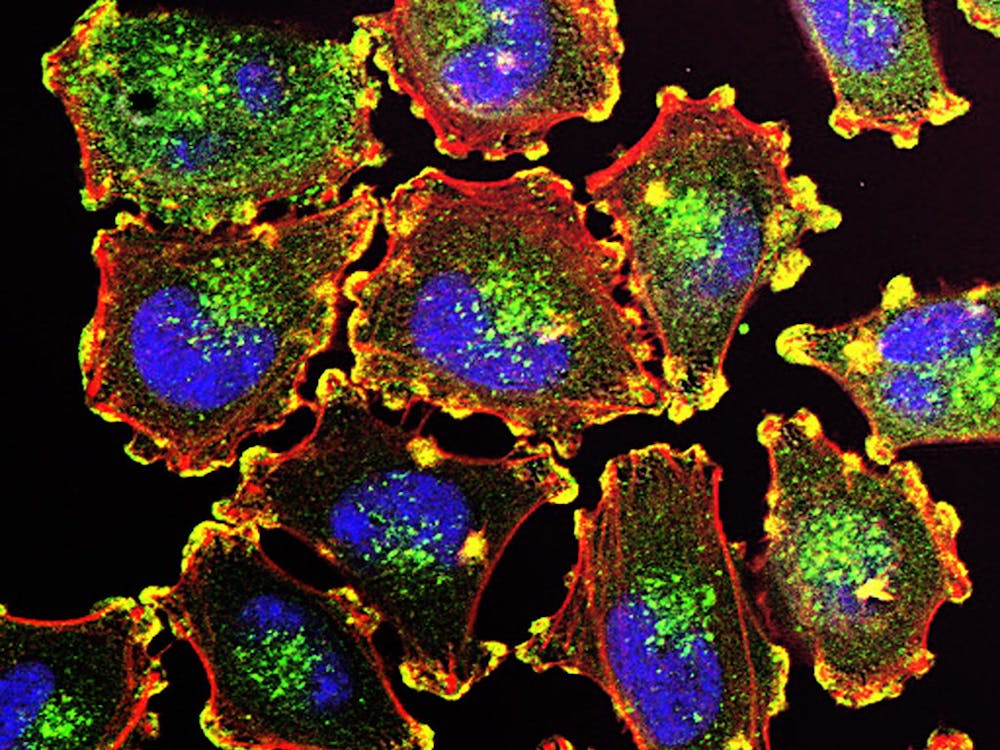Plants have always been an integral part of human life, both as food sources and as decorations. For that reason, the question of how plants mature has long been plaguing the minds of scientists. Recently, biologists at the University of Leicester found that the plant’s maturing process—the ubiquitin proteasome system, also known as UPS—not only occurs in the center of plant cells, but also in the chloroplasts.
The groundbreaking research is led by Paul Jarvis, a professor in the Department of Biology at Leicester. “To the best of our knowledge, our report is the first to present evidence that the UPS acts directly on plastid-resident proteins to control plastid functions,” Jarvis said. This discovery has several implications that the researchers discussed in detail.
To understand the impact of the research, one must first understand the process through which fruits and plants develop and die. As the plant grows, specific proteins within the cells are marked for degradation. The process is initiated by the proteasome, which is the dominant factor in the maturation of plants. By marking the indicated proteins with at least four ubiquitin monomers, the proteasome directs the proteasome lid to begin the breakdown of the protein.
The different stages in the breakdown of a protein are referred to as the ubiquitination pathway. The first phase that the proteins experience is the partial unfolding of the protein before proceeding to the active sites at the core of the 20S particle. The unfolding is also called translocation and scientists are still trying to model the process because numerous details are missing.
The unfolded protein is then broken down by the 26S proteasome using energy from ATP hydrolysis. The ubiquitination pathway is a generalized procedure for the majority of the protein breakdowns, but there are exceptions. Some proteins do not need to be ubiquitinated prior to degradation.
The process of ubiquitination is universal to eukaryotic cells such as plant cells, and determines the rate at which plants grow. The original assumption of the biologists at Leicester was that the ubiquitin proteasome system is only present in the center of the cell since that is where the most routinely broken down proteins are located.
As the researchers continue their study, however, they found that the UPS is also present in chloroplasts, organelles that perform photosynthesis.
The implication is that the UPS not only had a central role in the aging of plant cells, but also in the regulation and maturation of chloroplasts. A ligase called ubiquitin E3 ligase (also referred to as SP1) exists in chloroplasts and causes scientists to suspect its role in the growth of chloroplasts.
The E3 ligase represented the biggest hurdle for the researchers. “[We wanted] to figure out exactly what the SP1 protein does… to figure out what its targets are—i.e., which proteins it targets for degradation by the UPS... We had to figure out what the normal physiological role of the SP1 protein [is],” Jarvis said.
Since the UPS process is responsible for the maturation of plants, the researchers at Leicester state that with more research it may be possible to manipulate the growth rate of food crops. Jarvis discussed an example of fruit ripening: “Chloroplasts transform into chromoplasts; in this case, one might be able to manipulate the rate of fruit ripening by modifying the activity of SP1.”
If the time needed for fruits and crops to mature significantly decreased, crop yields would increase. The increase in the food supply could help solve the problem of overpopulation as the human population continues to climb upward.
In addition, if the process can be fully understood, researchers would be able to control the ripening rates of fruits, ensuring that fruits would not become inedible during the transportation process.
While the implications of this discovery are endless, there is still much to figure out. “We believe that this is just the tip of the iceberg, and that there is much more to learn in the fascinating new area of biology,” Jarvis said.






















Please note All comments are eligible for publication in The News-Letter.